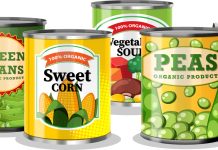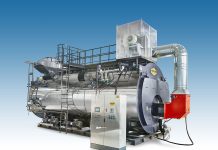 Acrylamide is a small molecule with neurotoxic and carcinogenic effect, based on an increasing number of studies. It has been used since the Fifties for the production of polyacrylamide, which has many industrial applications such as: flocculation agent in water treatment plants, in the production of paper and fabric, in cosmetic gels, in building materials, etc.
Acrylamide is a small molecule with neurotoxic and carcinogenic effect, based on an increasing number of studies. It has been used since the Fifties for the production of polyacrylamide, which has many industrial applications such as: flocculation agent in water treatment plants, in the production of paper and fabric, in cosmetic gels, in building materials, etc.
The finding that acrylamide is also formed as a process contaminant in the food industry has been completely fortuitous: following a 2002 industrial accident in Sweden, causing the leaking of acrylamide in the environment, the exposure level of the population was checked out; high blood levels of the substance where found in citizens living far away from the accident area, therefore other exposure causes where hypothesized, among which food exposure. It was found that acrylamide forms during high temperature treatments of foods containing both sugars and aminoacids, as bakery products (bread, biscuits, breakfast cereals, and any other product containing flour) and potato based (french fries, chips, crisps, other potato snacks). Acrylamide formation happens both during domestic and industrial cooking. Also cocoa and especially coffee toasting leads to its formation. The two main molecular precursors of acrylamide are the aminoacid asparagine and the monosaccharide glucose. Its formation is concurrent with Maillard reactions, a group of non enzymatic reactions which lead to food darkening and formation of typical flavours of “roasted” and “freshly baked”. Legal limits for presence of acrylamide in food have not been established as yet, despite its toxicity. The  reason is probably to be found in the fact that such limits should be very low to guarantee toxicological safety, causing radical production changes for many bakery and potato-based products. Nevertheless, routine tests on several food products are performed by food safety authorities of many European Countries, and the European Union itself has issued in various occasions opinions on acrylamide: already in 2007, it was recommended to monitor its levels in foods. In 2011, the European Food Safety Authority (EFSA) published data showing which foods are most affected: biscuits, coffee, roasted potatoes, french fries and crisps can all exceed 2 mg/kg of contamination, with some samples exceeding 5 mg/kg. Also bread and breakfast cereals can show high contamination, up to 1,5 mg/kg. Both food control authorities and food industries are interested in pursuing a series of action in order to minimize acrylamide formation in food products. In fact, over time it has been possible to identify some factors, some of which are crucially important, able to sensibly lower this contaminant formation, without compromising too much positive characteristics given by food roasting or frying such as taste, flavour, look (not too pale), and texture (crispiness) of final product. The organization Food Drink Europe, which represent European food industry, has issued an updated version of its guidlines “Acrylamide Toolbox”. These guidelines aims to help producers of food at high risk of acrylamide formation to minimize the problem. The cooking (or the final part of it) of some products has to be performed by consumers, e.g. pre-fried potatoes, breaded meat or fish (frozen or not), etc. For such products, it is important that information about time and temperature of cooking on packaging is correct, to avoid overcooking and therefore acrylamide formation. For products that are cooked by the food industry and/or sold to consumers ready to eat (e.g. bakery products, potato-based products, etc.), also other factors are important to minimize the contaminant formation, some of which are listed as follow.
reason is probably to be found in the fact that such limits should be very low to guarantee toxicological safety, causing radical production changes for many bakery and potato-based products. Nevertheless, routine tests on several food products are performed by food safety authorities of many European Countries, and the European Union itself has issued in various occasions opinions on acrylamide: already in 2007, it was recommended to monitor its levels in foods. In 2011, the European Food Safety Authority (EFSA) published data showing which foods are most affected: biscuits, coffee, roasted potatoes, french fries and crisps can all exceed 2 mg/kg of contamination, with some samples exceeding 5 mg/kg. Also bread and breakfast cereals can show high contamination, up to 1,5 mg/kg. Both food control authorities and food industries are interested in pursuing a series of action in order to minimize acrylamide formation in food products. In fact, over time it has been possible to identify some factors, some of which are crucially important, able to sensibly lower this contaminant formation, without compromising too much positive characteristics given by food roasting or frying such as taste, flavour, look (not too pale), and texture (crispiness) of final product. The organization Food Drink Europe, which represent European food industry, has issued an updated version of its guidlines “Acrylamide Toolbox”. These guidelines aims to help producers of food at high risk of acrylamide formation to minimize the problem. The cooking (or the final part of it) of some products has to be performed by consumers, e.g. pre-fried potatoes, breaded meat or fish (frozen or not), etc. For such products, it is important that information about time and temperature of cooking on packaging is correct, to avoid overcooking and therefore acrylamide formation. For products that are cooked by the food industry and/or sold to consumers ready to eat (e.g. bakery products, potato-based products, etc.), also other factors are important to minimize the contaminant formation, some of which are listed as follow.
- Potato cultivar: there are varieties of potatoes with particularly low levels of asparagine and sugars; asparagine usually exceeds sugars quantity, therefore the best strategy is to grow cultivars with low sugars levels.
- Agronomic factors: soil kind, fertilization, minerals, climate, time of harvest are all factors that have an impact on the level of acrylamide precursors (asparagine and sugars).
- Storage conditions: it is well known that prolonged storage of potatoes at low temperatures leads to the “sweetening” phenomenon, caused by partial hydrolysis of potato starch into glucose; it is therefore very important to prevent this, storing the tubers at the right temperature and for times as short as possible.
- Cutting: acrylamide formation especially happens on the surface of food, which is the part mostly exposed to heat; e.g. in the case of french fries, smaller diameters will contain more acrylamide compared to bigger ones. It would be beneficial also to automatically eliminate little pieces and fragments, but this means a loss of final product yield. In the case of crisps, the very fine thickness typical of these products obviously leads to high acrylamide formation.
- Blanching: one or more quick steps in hot water (around 70°C for 5 to 15 minutes) before frying is usually done in order to obtain a better final look of the product. Blanching is also able to eliminate a good part of sugars (very soluble) present on the cut surface of potato, where the greatest part of acrylamide will be formed, therefore this treatment is ideal also to diminish its quantity up to 50%, in particular for crisps.
- Pre-frying additives: glucose is sometime added after blanching to improve colour of final product, partly frustrating the beneficial effect of blanching. On the contrary, other pre-frying additives such as organic acids or sodium and calcium salts, seem to have a minimizing effect on acrylamide formation.
- Cooking or frying parameters: with higher cooking temperature and longer times, acrylamide formation will be more pronounced. In fact, there is a good correlation between food superficial darkening and the contaminant presence in it. Unfortunately, it is unviable to go below a certain darkening threshold otherwise the food appearance will be unacceptable (too pale, “undercooked” look). Besides, very low frying temperatures (< 140°C) lengthen too much cooking time, with the other disadvantage of increasing oil absorbed by food. Nevertheless, temperature should not exceed 170-175°C. In order to shorten frying times, it is also possible to blow dry potato sticks or crisps before frying. Lastly, a very good but expensive method to minimize acrylamide formation is vacuum frying, which lowers cooking temperature.
Bakery products
 Cultivar and agronomic choices: as for potatoes, also for cereals there are a series of pre-harvest variables (e.g. low asparagines cereal varieties) that can potentially lead to reduced acrylamide formation even before industrial processing.
Cultivar and agronomic choices: as for potatoes, also for cereals there are a series of pre-harvest variables (e.g. low asparagines cereal varieties) that can potentially lead to reduced acrylamide formation even before industrial processing.- Refined flours: whole (“brown”) flours, despite being superior from the nutritional point of view thanks to their high fibre content, are richer in proteins and therefore lead to higher acrylamide formation.
- Asparaginase: this enzyme, when added to doughs, is able to partly hydrolyze asparagine, lowering one of the two acrilamyde precursors.
- Leavening agents: in chemical leavening (e.g. biscuits), the use of sodium bicarbonate in place of ammonium bicarbonate reduces acrylamide formation, but has the disadvantage of slightly increasing sodium levels in the food. Other leavening agents that can be used instead of ammonium bicarbonate are potassium carbonate or potassium tartrate.
- Calcium salts: it has been proved that adding calcium carbonate or calcium sulphate can reduce acrylamide formation.
- In the case of bread, adding sugars to the dough (e.g. to improve yeast leavening) is to be avoided.
- In the case of breakfast cereals containing tree nuts (e.g. almonds or hazelnuts), these ingredients can increase overall acrylamide level because they often undergo a toasting process.
- Oven cooking parameters: for some products it has been possible to decrease temperature prolonging cooking time, in order to obtain the same final result (e.g. same moisture content) with a lower acrylamide level. Unfortunately, the final appearance of these products is paler and therefore not ideal if the superficial browning is an important factor for product appeal on consumers.
References
- R. Medeiros Vinci, F. Mestdagh, B. De Meulenaer. Acrylamide formation in fried potato products – Present and future, a critical review on mitigation strategies. Food Chemistry, 2011
- http://ec.europa.eu/food/food/chemicalsafety/contaminants/ciaa_acrylamide_toolbox09.pdf




